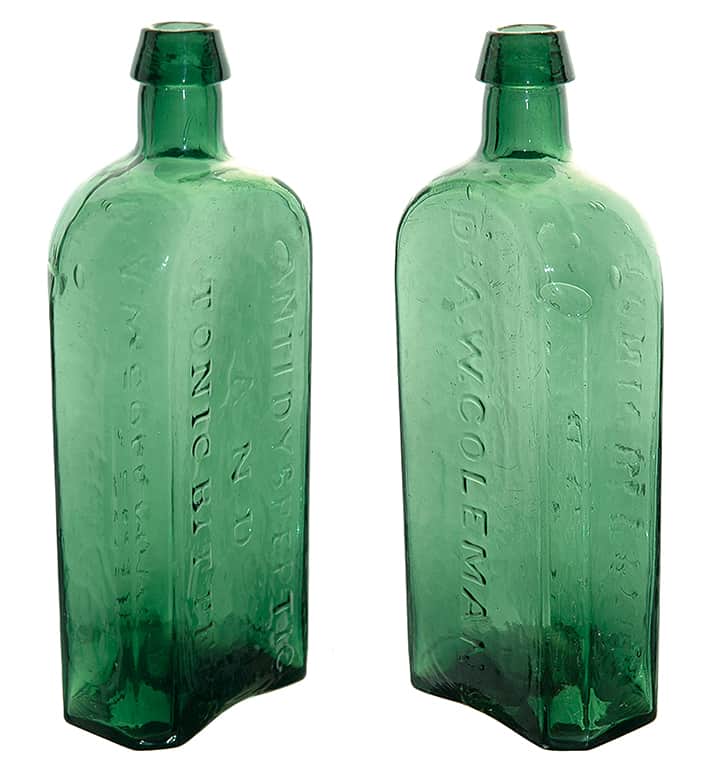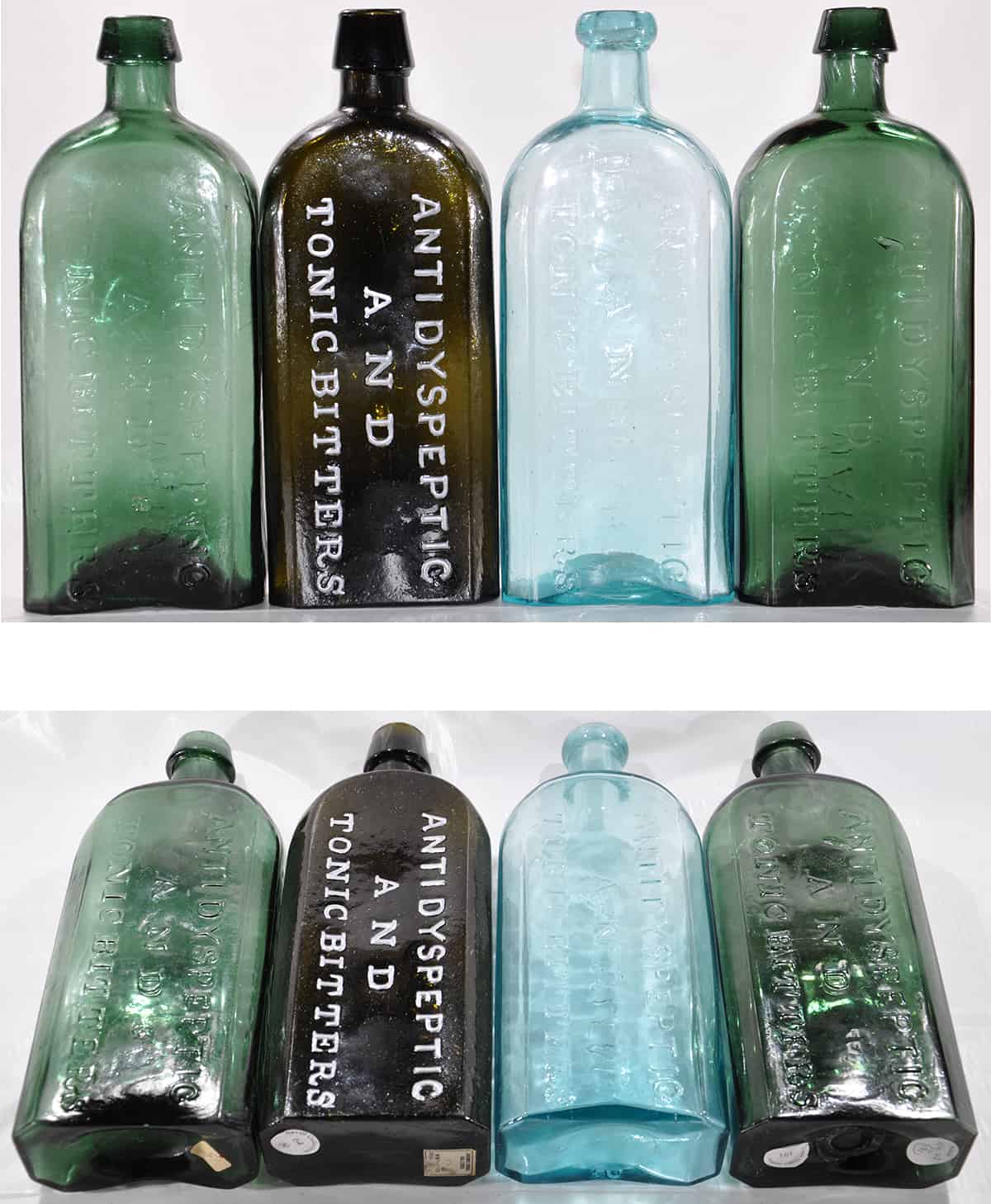Dr. A. W. Coleman’s Anti-Dyspeptic and Tonic Bitters
21 October 2014 (R•110414 – Rod Vining Examples) (R•061817) (R•033120)
![]() As a follow-up to the J. W. Hutchinson’s Tonic Bitters from Mobile, Alabama post, I thought it would be nice visit the Dr. A. W. Coleman’s Anti-Dyspeptic and Tonic Bitters, also from Mobile. Actually it is thought to be the oldest embossed bitters from this city. My example is pictured at the top of this post and is from the American Bottle Auctions – Grapentine I sale in April 2007.
As a follow-up to the J. W. Hutchinson’s Tonic Bitters from Mobile, Alabama post, I thought it would be nice visit the Dr. A. W. Coleman’s Anti-Dyspeptic and Tonic Bitters, also from Mobile. Actually it is thought to be the oldest embossed bitters from this city. My example is pictured at the top of this post and is from the American Bottle Auctions – Grapentine I sale in April 2007.
The Carlyn Ring and W.C. Ham listing in Bitters Bottles is as follows:
C 194 DR. COLEMAN’S ANTI DYSPEPTIC AND TONIC BITTERS
DR. A. W. COLEMAN’S // f // ANTI DYSPEPTIC / AND / TONIC BITTERS // f //
9 1/4 x 3 1/2 x 2 1/8 (7 1/4) 1/2
Rectangular, LTC, Applied mouth, Metallic pontil mark and Rough pontil mark,
Green (medium to black) – Rare; Aqua – Extremely rare
Smooth base examples usually black.
Note: One whole one and 8-10 fragments of the base were dug at the Canal Zone. Three green and two black glass dug in Mobile. Probably oldest Mobile embossed bitters. Coleman was druggist in Mobile.
Mobile Register & Journal, January 3, 1848. Daily Picayune 1846, 1847, 1848.
I have three colors of the Coleman’s (see picture of Rods bottles below), but one of my original emerald green ones was open pontiled instead of iron pontiled. The open pontiled ones are harder to find. The Coleman’s black glass ones have had their pontils fire polished off, or whoever blew that batch used some other technique to hold or rest the bottle on while forming the lip. They are not really any “newer” than the emerald green examples, but normally do not have a true “pontil scar” of any type on them. They were all blown in a flat bottomed mold, and some of the black ones, while “smooth base” have an irregular indention in the base, or at least smooth, sand like impressions or swirls in the glass. – Rod Vining
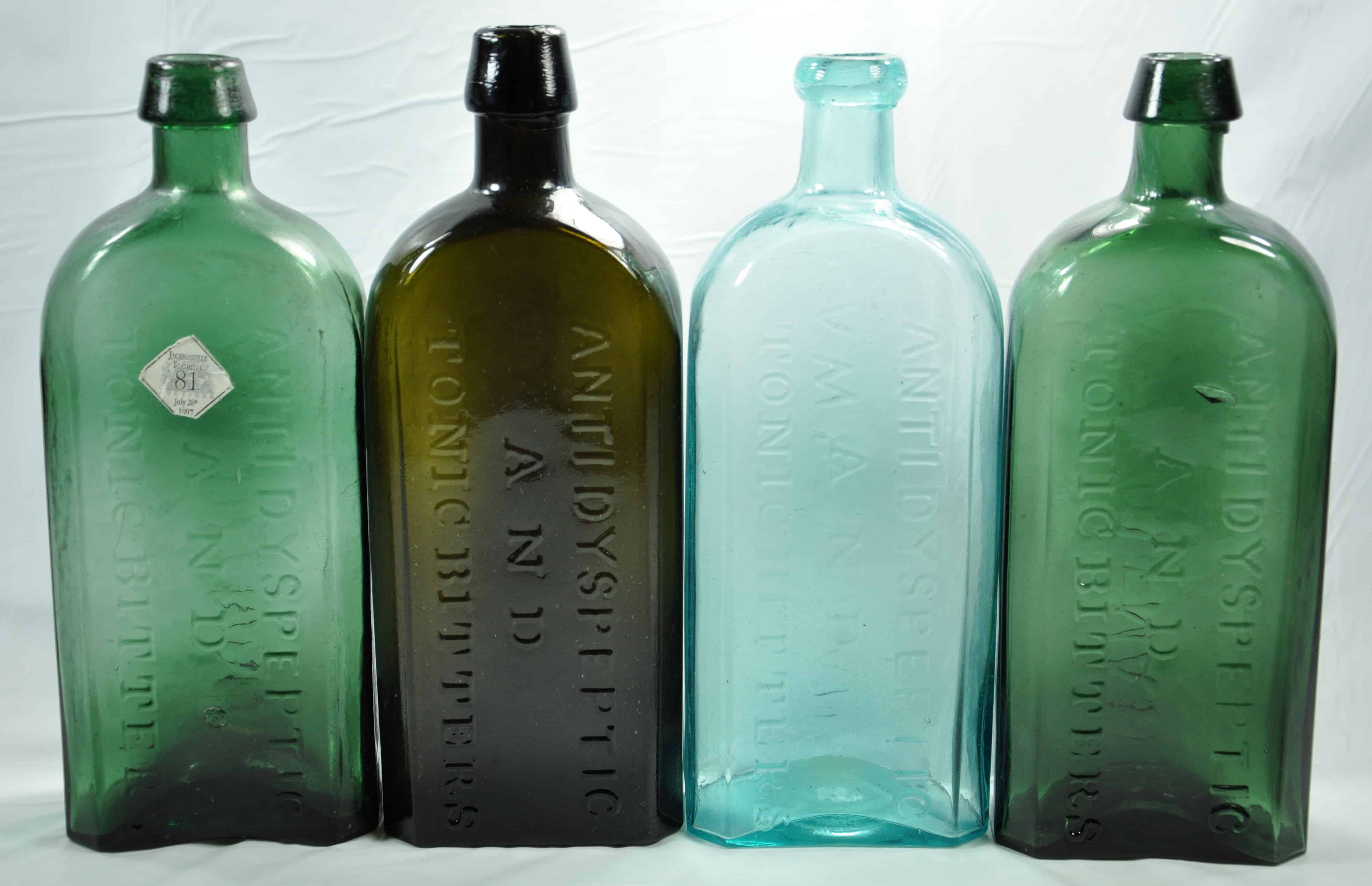
Coleman’s Antidyspeptic and Tonic Bitters in emerald green, olive green-black glass, and aqua. Emerald ones are iron and open pontiled, aqua is iron pontiled, black is smooth, probably had the pontil fire polished off. – Rod Vining Collection
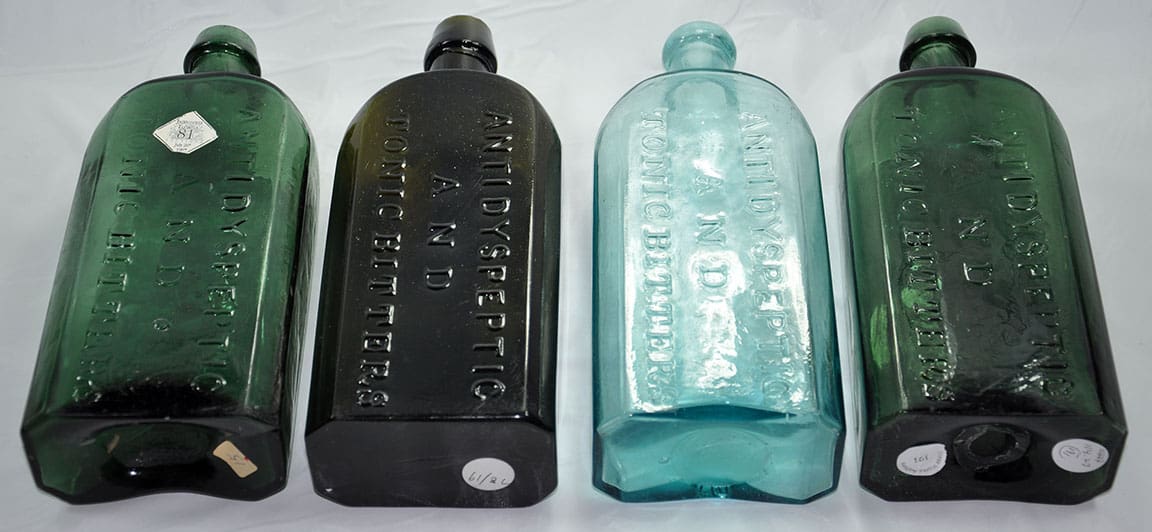
Coleman’s Antidyspeptic and Tonic Bitters in emerald green, olive green-black glass, and aqua. Emerald ones are iron and open pontiled, aqua is iron pontiled, black is smooth, probably had the pontil fire polished off. – Rod Vining Collection
Tracking down Dr. A.W. Coleman
At first I thought it might be fairly easy to track down Dr. A.W. Coleman in Mobile, Alabama. I mean, just the other day, I was just searching within many Mobile, Alabama directories looking for information on John W. Hutchinson. His bitters first was sold in 1840, though probably not in an embossed bottle. That would come later. So what do the initials “A.W.” stand for? At first I was thinking it was Abraham Womack Coleman who was born around 1800. This is not correct. A red herring. Maybe we are talking about Asa W. Coleman who was born about 1808 in Georgia. Actually I think I am looking in the wrong part of the country.
“Put up in quart bottles, with the name of the inventor in larger raised letters on each bottle. Price $1 per bottle or six bottles for $5”
The top advertisement below indicates that this bitters originated and was sold around 1834, possibly in Boston or New York. The newspaper advertisements are from the south though. I suspect Dr. A.W. Coleman was from Dublin, Ireland and came over on a ship to New York city. He invented and sold this bitters early and for some reason he either died and gave the recipe to his son, E.D. Coleman or he moved to Mobile, Alabama. Advertising typically occurs in Mobile, Alabama and New Orleans Louisiana in 1846, 1847 and 1848. Certainly by that time, A.W. Coleman had passed away and E.D. Coleman, marketed the brand from 106 Dauphin Street in Mobile, Alabama and 92 Poydras Street in New Orleans. Note that one whole Coleman’s Bitters example and 8-10 fragments of the base were dug at the Canal Zone.
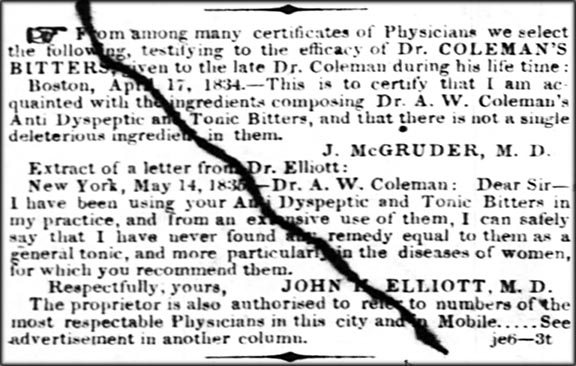
Dr. A. W. Coleman’s Anti-Dyspeptic and Tonic Bitters advertisement – The Times Picayune (New Orleans), Tuesday, June 6, 1847 *the late Dr. Coleman referenced.
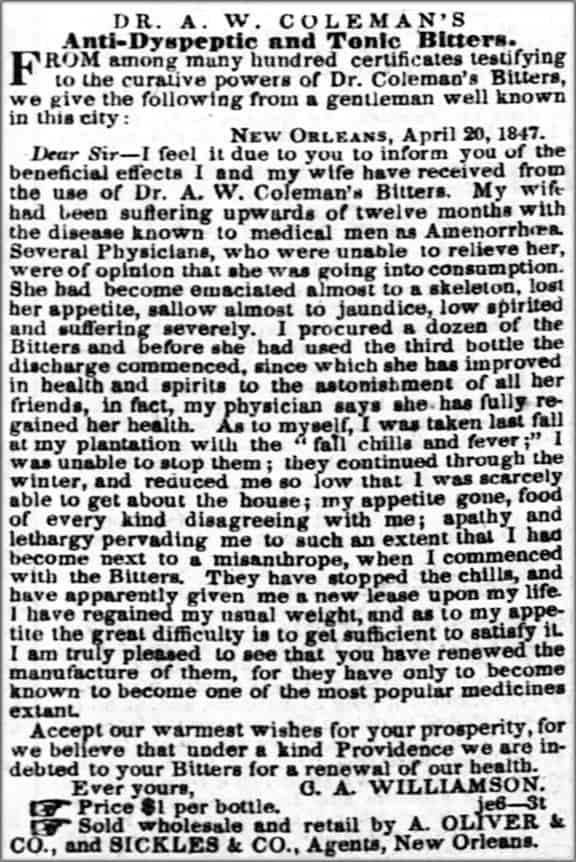
Dr. A. W. Coleman’s Anti-Dyspeptic and Tonic Bitters advertisement – The Times Picayune (New Orleans), Tuesday, June 8, 1847
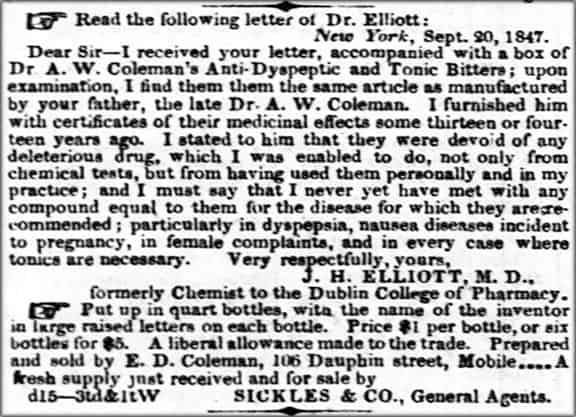
Dr. A. W. Coleman’s Anti-Dyspeptic and Tonic Bitters advertisement – The Times Picayune (New Orleans), Saturday, December 18, 1847 *Indicates that E. D. Coleman is selling his late fathers tonic bitters at 106 Dauphin Street in Mobile, Alabama.
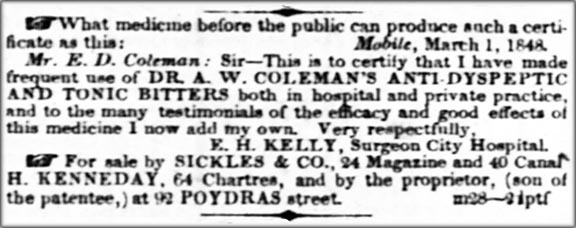
Dr. A. W. Coleman’s Anti-Dyspeptic and Tonic Bitters advertisement – The Times Picayune (New Orleans), Friday, April 7, 1848 *Indicates that E. D. Coleman, son of patentee, is selling his late fathers tonic bitters at 92 Poydras Street in New Orleans.
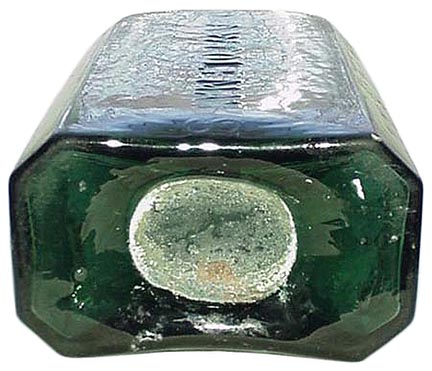
Iron pontil on Dr. Coleman’s Anti-Dyspeptic Tonic Bitters. Owned by bottleninja, from the Charlie Hall collection – AntiqueBottles.com

